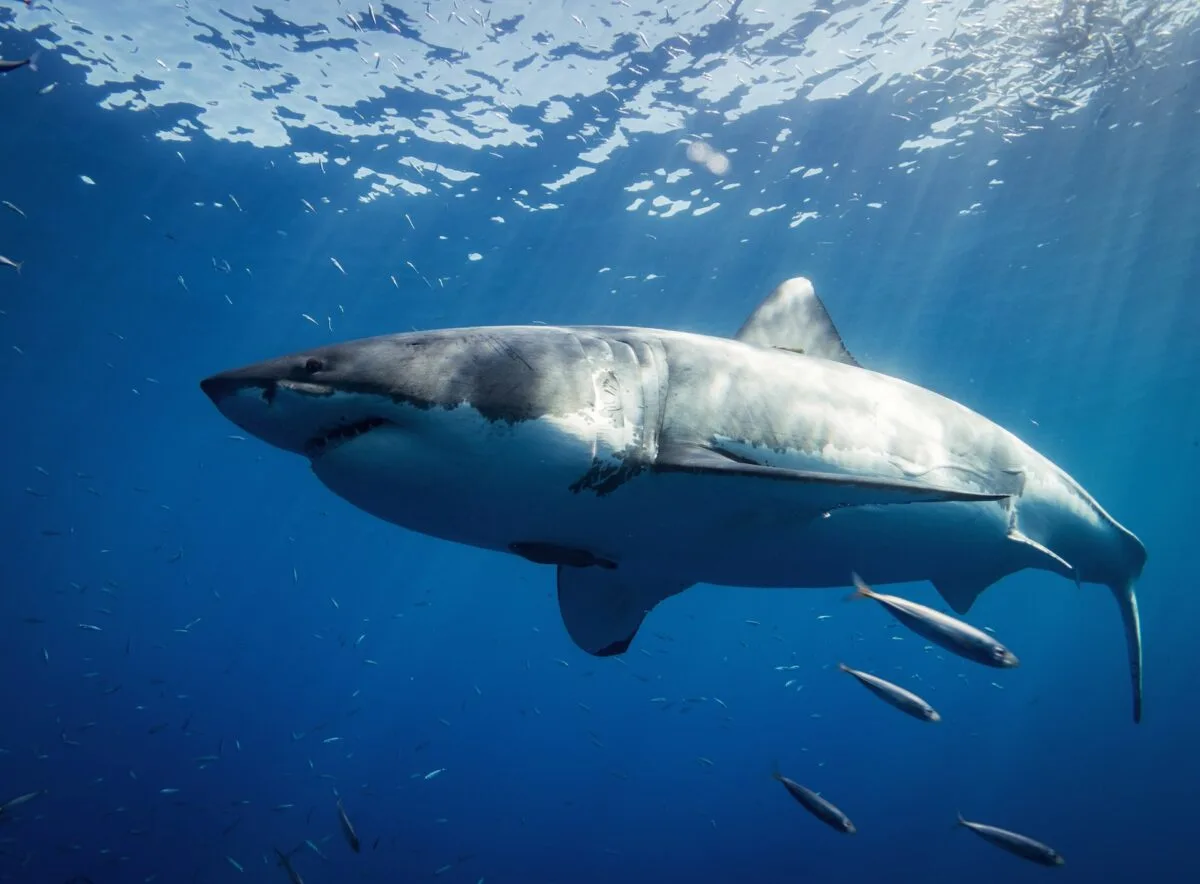Are you interested in marine wildlife and fascinated by the treacherous depths of the ocean? If so, prepare yourself for a thrilling exploration of two of the most dangerous underwater creatures – The Great White Shark and Stonefish. Both these species are masters of surviving in harsh environments, but how do they stack up against each other?
This blog post will examine their unique abilities — from anatomy to hunting tactics. So, fix your scuba gear because it’s time to compare these two incredible aquatic predators!
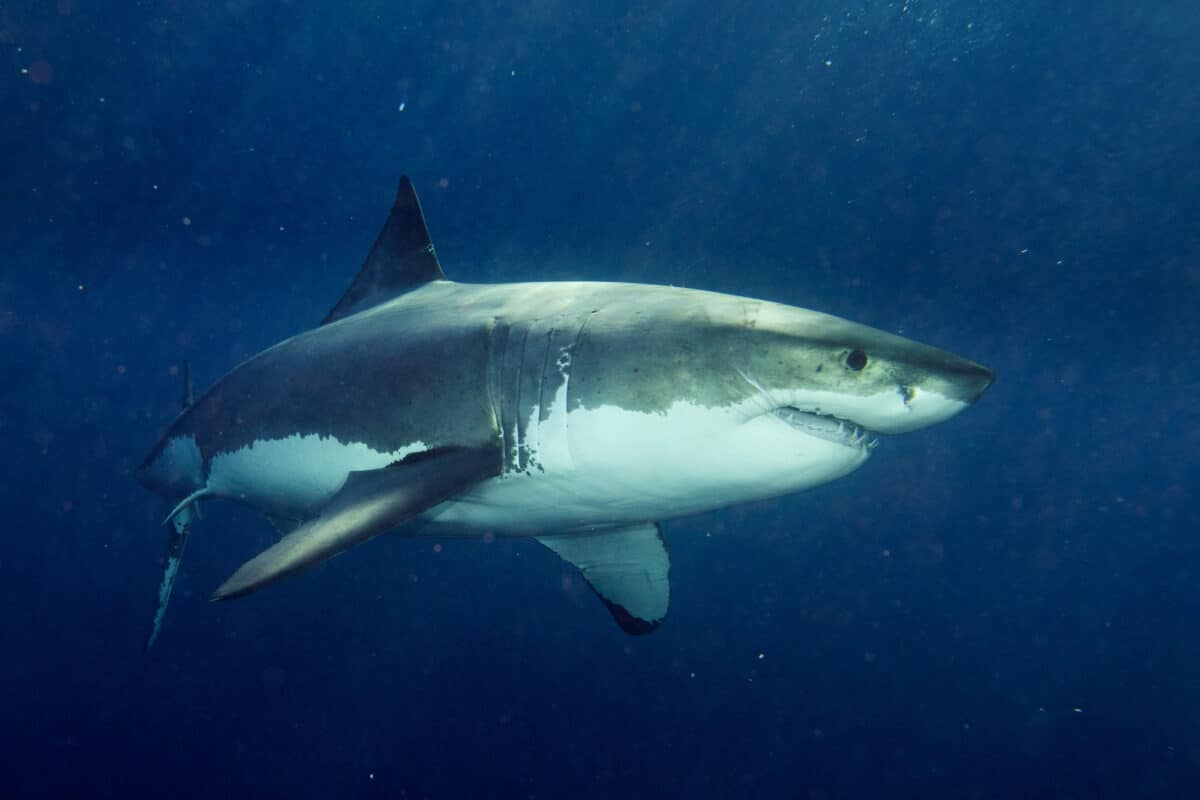
Key Points
| The Great White Shark is a renowned predator of the seas. It’s known for its speed, strength, and supreme hunting skills. |
| The Stonefish may look innocuous, but it’s one of the most venomous creatures in the ocean. Its spines contain a potent venom that can cause extreme pain, tissue damage, and even death. |
| Great White Shark has the speed and strength to take down a Stonefish; just one sting from the Stonefish’s venomous spines could be enough to deter the shark or even kill it. |
| It’s hard to determine the champion of a Great White Shark Vs. Stonefish battle; it’s clear that both are formidable opponents in their own right. |
| The two creatures would never meet in the wild as they inhabit vastly different ocean areas. The Great White Shark prefers deeper waters, while the Stonefish is commonly found in shallower reef environments. |
Want to jump ahead? Click below
Comparison Table
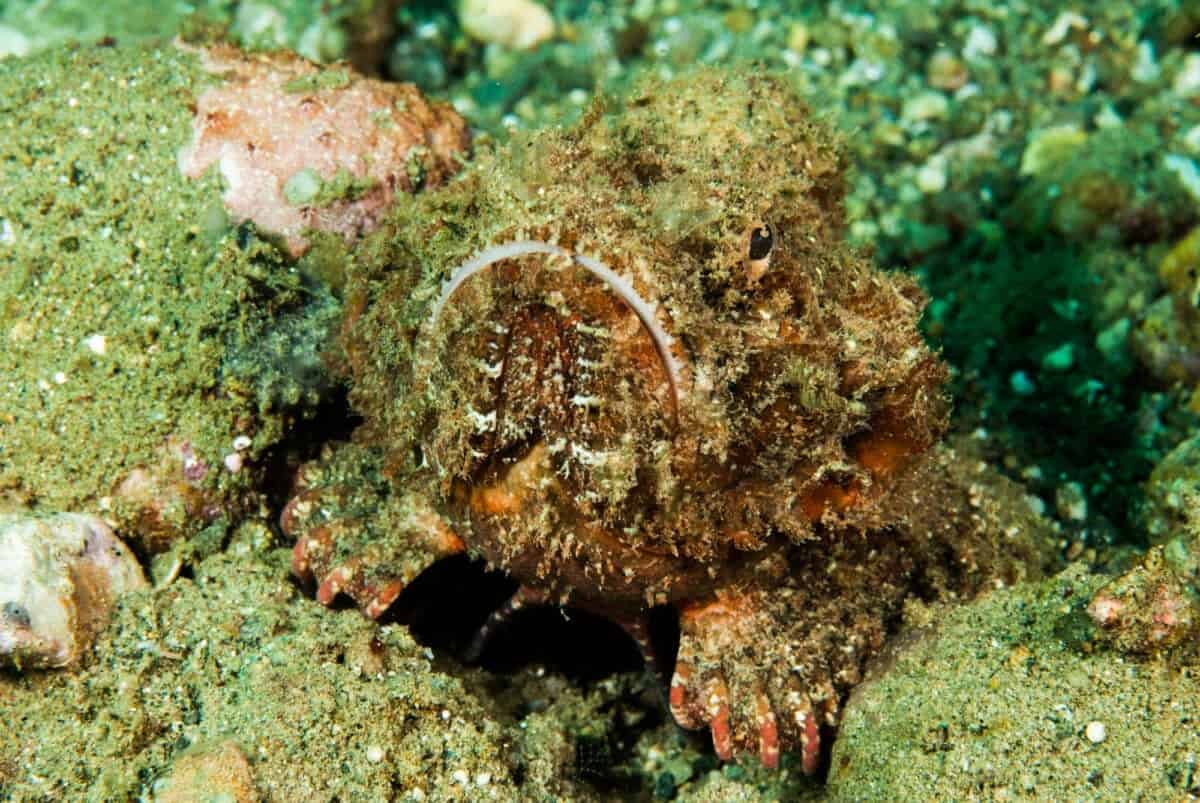
| Features | Great White Shark | Stonefish |
|---|---|---|
| Powerful Jaws | Length: up to 20 feet Weight: over 5,000 pounds | Length: around 30-40 cm Weight: around 5 pounds |
| Reputation | Ferocious marine predators | Most venomous fish in the world |
| Behavior | Leap and attack their prey without alerting them | Strike when their prey is less than their body length away |
| Hunting | Poweful Jaws | Camouflage abilities make it an expert at ambushing its prey |
Exploring The Anatomy Of Great White Sharks
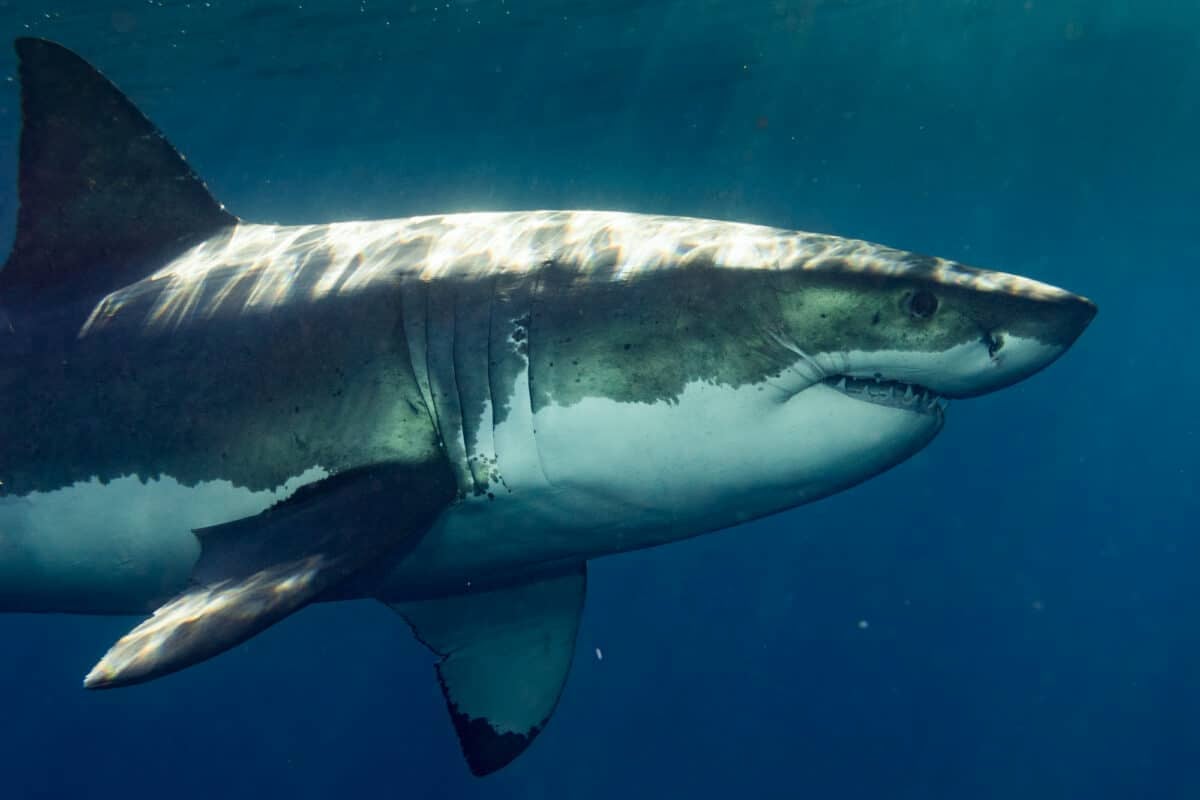
Size And Weight
Great White Sharks are one of the most fascinating creatures on the planet. With an average size of around 15 feet and a weight of up to 2,200 pounds, they are one of the largest predatory fish in the world. Despite their size, these sharks are graceful swimmers, capable of reaching incredible speeds of up to 35 miles an hour.
Their anatomy is designed for survival, with powerful jaws filled with serrated teeth constantly being replaced. Their streamlined bodies help them to move smoothly through the water and to blend in with their surroundings when hunting. As apex predators, Great White Sharks play an essential role in ocean ecosystems, and studying their anatomy can help us better understand these amazing animals.
Watch out: How A Great White Shark Strikes.
Teeth
Great White Sharks are fascinating creatures, and one of the most exciting aspects of their anatomy is their teeth. They are unique in that they are serrated and constantly growing, with multiple rows replacing any lost or damaged. These teeth are perfectly designed for their primary meals containing seals and sea lions.
However, they also feed on other prey, such as fish and sharks. Their impressive size and sharpness of their teeth allow them to tear through tough skin and bone easily. With up to 300 teeth in their mouths at any given time, it’s no wonder they are known as some of the most formidable predators in the ocean.
Adaptations
Great white sharks have evolved to become the ocean’s ultimate predator over millions of years. One of the adaptations that makes them so deadly is their ability to sense electromagnetic fields. Known as the Ampullae of Lorenzini, these tiny pores on their snouts allow them to detect electrical signals from other animals, including their prey. They allow them to hunt precisely in murky waters where vision is limited.
Additionally, their streamlined body shape, powerful tail, and rows of razor-sharp teeth help them to move quickly and efficiently through the water, making them one of the most fearsome and efficient predators in the animal kingdom. It’s fascinating to explore the anatomy of these apex predators and learn how they have evolved to become suited to their role at the top of the food chain in the ocean.
Examining The Anatomy Of Stonefish
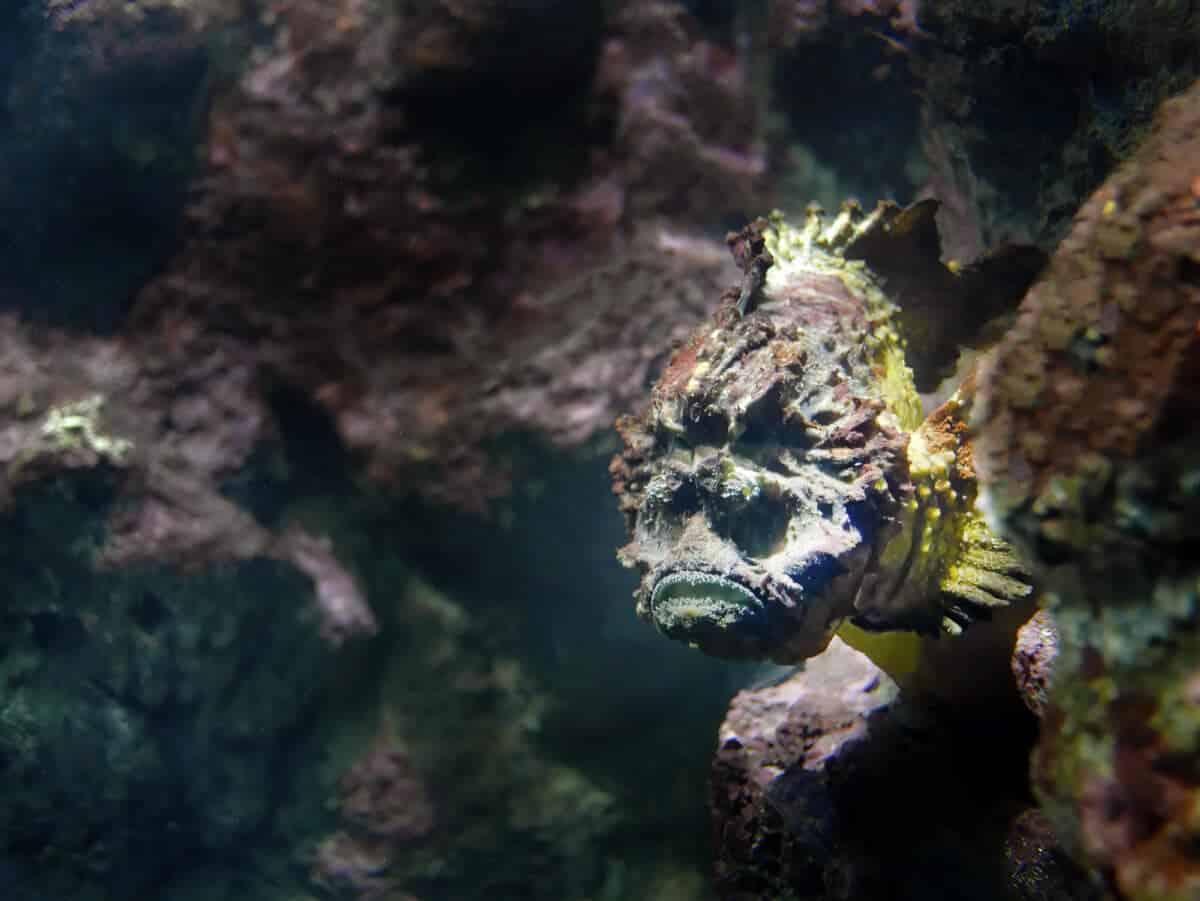
Size And Weight
The Stonefish is a fascinating creature for marine biologists and curious enthusiasts alike. One particular aspect of this species that piques interest is its size and weight. Stonefish are typically small creatures, with an average length of 30-40 centimeters and a weight of about 3-4 kilograms.
However, some larger and heavier individuals have been known to exist, with lengths reaching up to 50 centimeters and weights up to 5 kilograms. Despite their diminutive size, Stonefish is one of the most venomous species in the world, making it a fascinating and dangerous creature to study.
Venomous spines
The Stonefish, also known as Synanceia, is one of the most venomous fish in the world. Its venomous spines that line its dorsal fin are capable of causing excruciating pain, swelling, and even paralysis. Moreover, its unique anatomical structure allows it to blend seamlessly into its surroundings, making it nearly invisible to its predators and prey.
However, while their camouflaging ability is impressive, their venomous spines are even more fascinating. These spines are connected to a venom gland and injected into their prey or enemy. Knowing the anatomy of this formidable creature is crucial for researchers and marine biologists to understand how to protect both humans and the environment from its potentially dangerous presence.
Camouflaged Scales
The Stonefish has an intricate anatomy that includes a camouflage of scales specifically designed to match the environment in which it lives. These scales are not only used for masks, however. They also help protect the Stonefish from potential predators. Despite its beauty, the Stonefish must always be approached with caution. Its venom can inflict excruciating pain, paralysis, and even death in some cases. Therefore, understanding the anatomy of this dangerous creature is crucial for those who come into contact with it.
Checkout: Scary Facts About Stonefish.
Comparing Behaviors: Hunting Tactics Between The Two Species
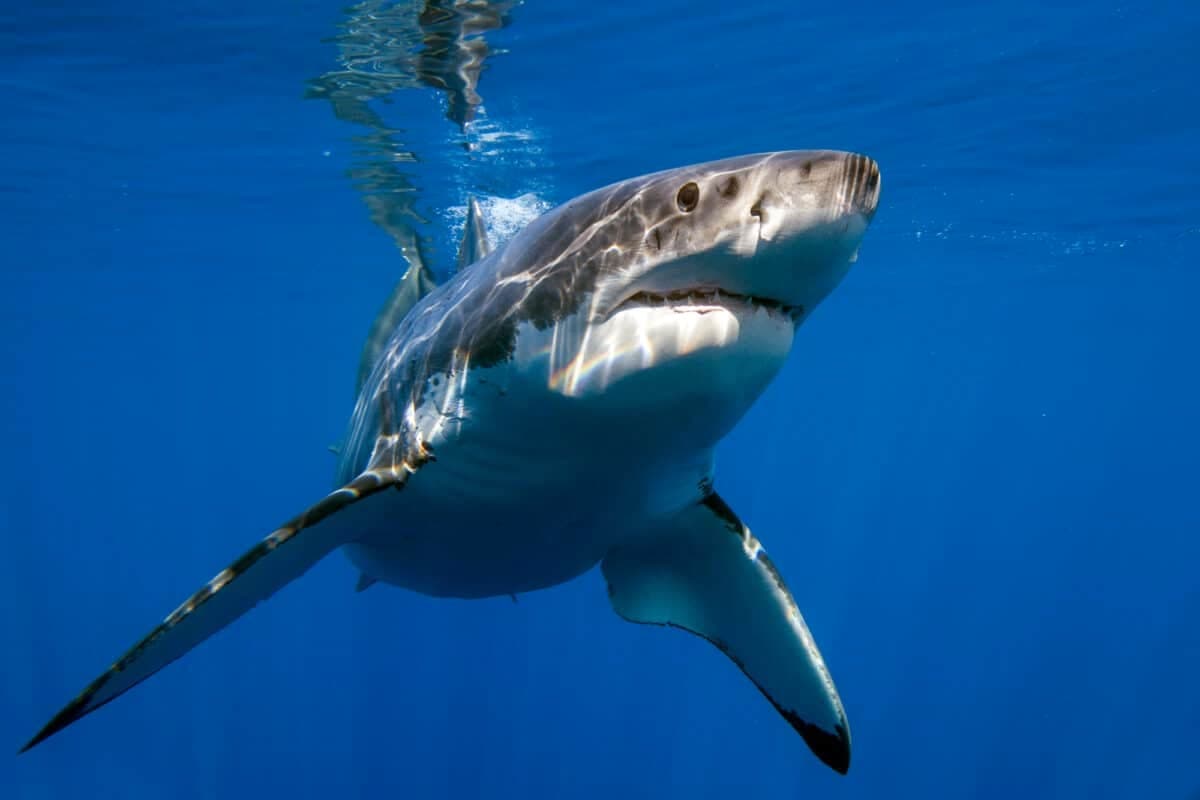
The great white shark and the stonefish, two feared predators lurking in the ocean’s depths, exhibit extremely different hunting tactics to catch their prey. The great white shark relies on its powerful jaws and immense speed to attack its victims from below. On the other hand, the Stonefish uses its impenetrable hide and venomous spines to ambush unsuspecting fish that swim too close.
Despite the differences in their methods, both creatures are highly skilled hunters and have adapted over time to dominate their respective niches in the food chain. It’s a fascinating example of how nature provides many ways for species to survive and thrive in the wild.
Social Interaction Habits
When talking about deadly sea creatures, the great white shark and Stonefish are prominent. While both have unique ways of surviving in their respective habitats, the comparison between them can be fascinating. Regarding their social interaction habits, the two creatures are worlds apart.
While great white sharks are often solitary creatures and prefer their own company, Stonefish are known to be highly social and have a fascinating way of communicating with other fish. Though Stonefish may not be as well-known or feared as the great white shark, their social nature and communication habits make them incredible creatures to observe and learn from.
Exploring The Differences In Diet
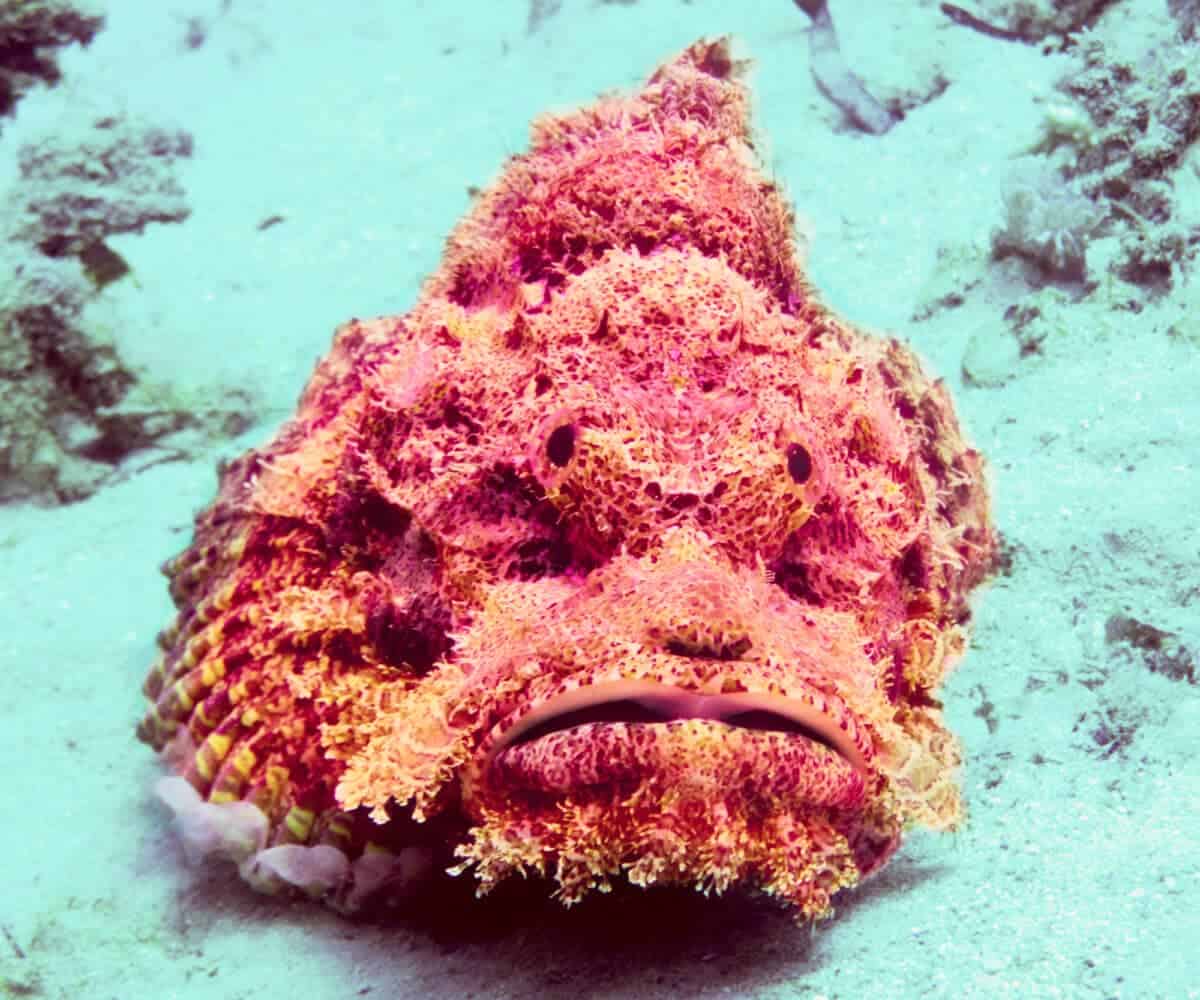
Great White Sharks and Stonefish are diverse predator species with unique food habits. Great White Sharks have a reputation for being one of the ocean’s top predators and are known for their distinguishing diet incorporating fish, squid, sea turtles, pinnipeds, seabirds, and even whales.
On the other hand, Stonefish feed on smaller organisms such as crustaceans, mollusks, and small fish. While they reside in the ocean, the Great White Sharks’ wide array of diet options is more adaptable, whereas the Stonefish’s specialized diet suits a specific niche. Both creatures are fascinating predators with unique feeding habits and are a significant part of the ocean’s ecosystem.
How Do They Forage For Food?
When it comes to foraging for food, the Great White Shark and Stonefish couldn’t be more different. Great White Sharks live in open waters and hunt larger prey such as seals, sea lions, and even whales. They are known for their incredible speed and power, allowing them to take down their prey quickly.
On the other hand, Stonefish reside in shallow coastal waters and coral reefs, where they tend to remain stationary and wait for their game to come to them. They are masters of camouflage and have developed a defense mechanism through their venomous spines. While both the predators are highly effective in their habitats, their foraging methods could not be more distinct. It just goes to show how unique and diverse the ocean’s ecosystem can be.
FAQs
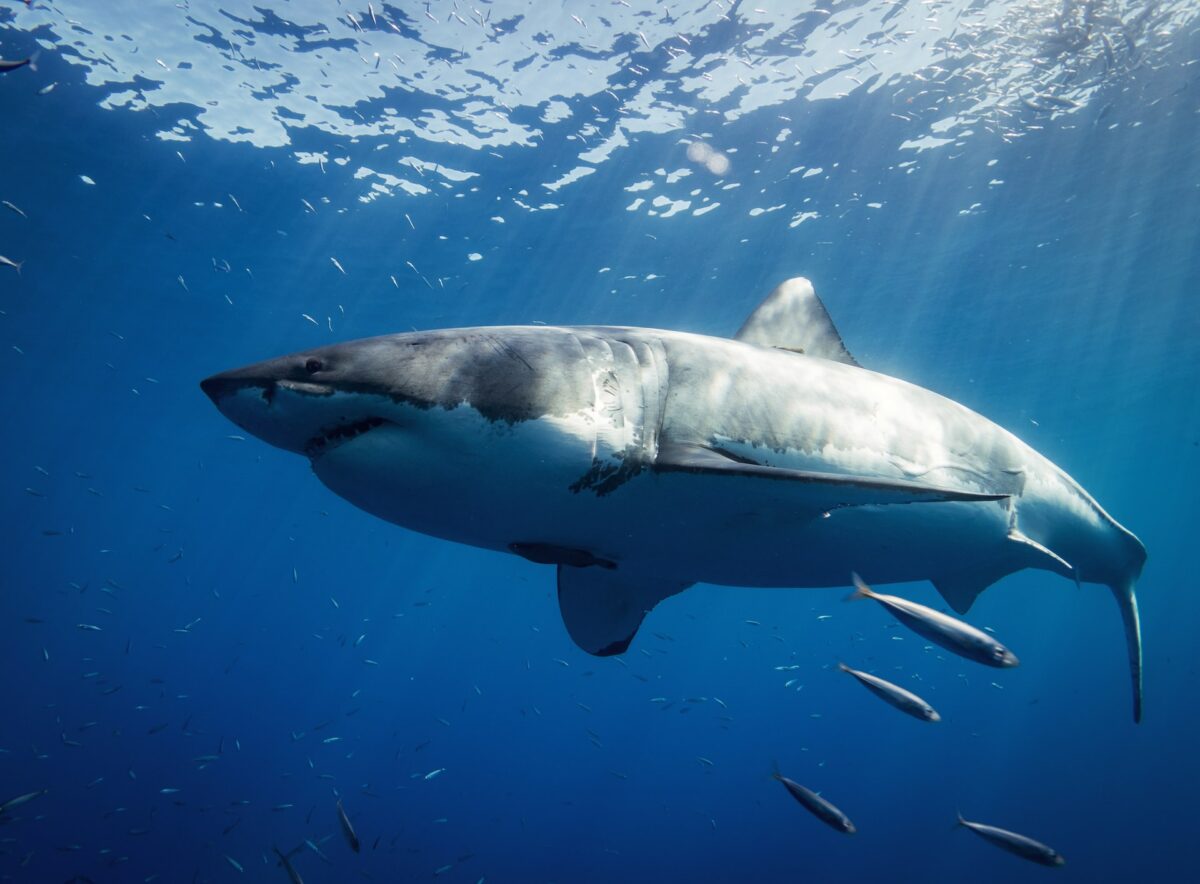
- What Is The Habitat Of The Great White Shark And Stonefish?
The Great White Sharks are primarily found in coastal waters and prefer cooler temperatures. On the other hand, the Stonefish are mostly found in the tropical waters of the Indo-Pacific region, where they use their venomous spines to catch small fish and crustaceans.
- What Are The Physical Characteristics Of The Great White Shark And Stonefish?
The Great White Shark is one of the largest predatory fish in the world. It has an average length of 15 feet and a weight of up to 2,500 pounds. They have a streamlined body with a pointed snout and multiple rows of serrated teeth. In contrast, the Stonefish is a much smaller fish, measuring up to 30 centimeters in length and weighing less than a kilogram. They have broad, flat heads and a stony, rough exterior that helps them blend in with their environment.
- How Do The Great White Shark And Stonefish Behave?
The Great White Shark is a solitary animal that spends most of its time hunting and patrolling its territory. They have been known to breach the surface of the water to catch their prey. They can swim up to speeds of 35 mph. On the other hand, the Stonefish is a sluggish creature that spends most of its time lying motionless on the seabed. They rely on their stealth and venomous spines to catch their prey, which they swallow whole.
Wrapping Up with the Great White Sharks Vs. Stonefish
After researching the incredible characteristics of the great white shark and Stonefish, we have concluded that each animal is unique and deserves our respect. When investigating the intricate details of both animals, it’s hard not to admire their unique adaptations and abilities that make them what they are today.
From their physical features to dangerous habits, many similarities between these animals could lead to confusion or peril if someone is unaware of which creature they may cross paths with. As such, always practice safe distances if you encounter the great white shark or Stonefish during your marine explorations!
Next up:
- Great White Shark vs. Blue-Ringed Octopus
- Fearsome Saw-Scaled Viper Bite
- Great White Shark Vs. Lionfish
Join our Forum for free today!

- Beachgoers Save Massive Shark Stranded In Florida - July 22, 2024
- Pit Bull Rescued From Being Chained Its Whole Life Gets A Surprise - July 21, 2024
- Dog With Zoomies Takes Flight Into Barley Field - July 21, 2024

